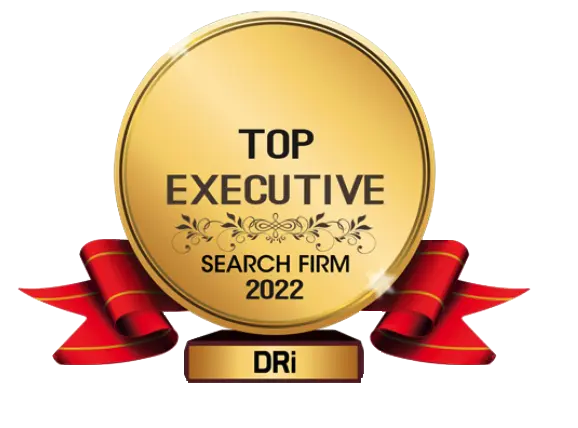In the nonprofit and social impact space, identifying and nurturing talent is crucial for sustainable growth and impact. To ensure a pipeline of capable leaders, it is essential to invest in talent development strategies that cultivate the potential within the organization.
In our last blog, we discussed ways to attract the next generation of leaders from outside your current workforce. In this blog, we will discuss three key ways of nurturing and developing talent within your current workforce.
1. Identifying Potential Early On
Identifying talent within your organization begins with a keen eye for potential. Future leaders may not always stand out immediately, but they often exhibit traits such as passion, creativity, dedication, and a deep understanding of the organization’s mission. To spot potential leaders, engage in open dialogues with team members to encourage them to share their ideas and aspirations, implement performance markers, or use quantitative analysis tools that allow you to recognize leadership capabilities.
It’s also essential to consider that not everyone aspires to be the same type of leader – or a leader at all. Some may prefer to lead projects rather than people, while others may excel at managing individuals rather than specific initiatives. Some may want to stay where they are or make lateral moves to grow their skills outside of leadership for the time being. Therefore, understanding everyone’s unique aspirations and career goals is essential.
Once you have spotted potential leaders and had these valuable conversations, work with them to tailor career development plans that address their needs and goals as well as the needs and goals of the organization. By recognizing and nurturing potential early on, non-profit and social impact organizations can build a solid foundation and ensure a solid leadership pipeline.
2. Providing Learning and Growth Opportunities
In today’s competitive job market, one of the ways that nonprofit and social impact organizations can stay competitive with top leadership talent is to offer opportunities for learning and growth. Offer professional development programs, workshops, and training sessions to help employees acquire new skills and broaden their knowledge base. Encourage them to attend conferences, continuing education classes, seminars, and networking events to expand their horizons and connect with like-minded professionals.
Mentorship programs can also be valuable in talent nurturing and development. According to Forbes, “Mentorship programs facilitate skill-building and continuous learning in a way few other initiatives do. The process also builds bonds that encourage employees to stay with the company for a longer period because they feel valued and supported.”
Look for opportunities to pair experienced leaders with emerging talents to provide guidance, share insights, and help foster leadership qualities. (And don’t forget about the benefits of reverse mentorship!) This mentor relationship not only accelerates leadership growth but also helps in the transfer of institutional knowledge—an important aspect for future leadership.
3. Empowering Through Responsibility and Inclusivity
Empowerment is a cornerstone of nurturing talent within non-profit and social impact organizations. According to upwork, “Organizations can achieve quicker and more effective problem-solving and decision-making by giving employees the autonomy to make their own decisions with the right level of guidance.” Entrust future leaders with responsibilities that challenge them and allow them to take ownership of projects and people. Give them the opportunity to lead initiatives, even if they are small-scale at first, and increase their level of responsibility as they become more confident. Providing team members with autonomy and the opportunity to make project-focused decisions instills confidence and hones leadership skills such as creativity, problem-solving, active listening, conflict resolution, and more.
Promoting inclusivity and diversity within the organization is essential for nurturing talent. Ensuring that all employees have equal access to opportunities for growth and leadership roles is an important part of inclusivity in the workplace, as is embracing diverse perspectives and experiences that enrich the organization and provide a broader range of leadership styles. By creating an inclusive environment, non-profit and social impact organizations can empower talent from all backgrounds to step into leadership roles and drive positive change.
In conclusion, nurturing talent within non-profit and social impact organizations is not just an investment in individuals but also a commitment to the organization’s long-term success. By inspiring and instilling the right tools, a well-rounded pool of future leaders is created—one that will carry the mission forward, making a lasting impact on their communities.
Experts in Non-Profit and Social Impact Executive Search
For over 25 years, DRiWaterstone Human Capital has been dedicated to matching mission and purpose-driven organizations with top purpose-driven candidates. Our team of experts has developed an extensive network and knowledge of the non-profit and social impact sectors, and we excel in helping our clients find the best possible talent to support their growth and performance goals.
Let’s start a conversation—contact us today to talk to one of our dedicated team members.
object(WP_Post)#4204 (24) {
["ID"]=>
int(8589)
["post_author"]=>
string(1) "3"
["post_date"]=>
string(19) "2023-10-17 16:44:41"
["post_date_gmt"]=>
string(19) "2023-10-17 16:44:41"
["post_content"]=>
string(5702) "
Nonprofit and social impact organizations serve as critical support for their communities. From addressing social issues, improving awareness, and increasing advocacy efforts, and more—their work is needed. These organizations rely on dedicated and passionate employees to accomplish their missions effectively. However, attracting and retaining talent in the non-profit sector can be challenging.
One way to address this challenge, is for non-profit and social impact organization leadership teams to regularly review their employee value proposition (EVP) to ensure that it remains compelling and aligned with their mission, and that progress is being made against it.
Here’s why:
Continual Alignment with Organizational Values
In the dynamic landscape of nonprofit and social impact organizations, tracking progress against the EVP to ensure continued alignment with the organization's core values is crucial. While the EVP and values won’t likely change regularly, assessing how the actions of the organization and the individual team members reflect those values and promises is essential. If there's a misalignment, it becomes imperative to address the issues and find new opportunities to deliver.
For example, suppose an organization has collaboration as a value and/or commits to providing a psychologically safe workplace as part of its EVP but fails to offer opportunities to share ideas or feedback. In that case, the actions of the organization are misaligned with its values and EVP, and it would be an opportunity to revisit how the organization can better live up to its EVP and values, and build a workplace where employees genuinely feel psychologically safe and connected.
This ongoing evaluation and adjustment process ensures that the organization remains focused on purpose, demonstrates a commitment to its team, and can help engage employees and motivate them to contribute meaningfully to its purpose and mission.
Aligning Employee Expectations with Organizational Purpose
Regularly revisiting and tracking progress against the EVP serves a dual purpose for organizations. It helps align employee expectations and helps employees understand their integral role in the organization's success and the impact they have on the communities they serve.
Aligning expectations between employees and employers is key to creating a well-rounded and high-performing workplace. For instance, if the EVP highlights a workplace characterized by flexibility and inclusivity, and employees express their desire for a 4-day remote work plan, it's a matter of managing these expectations effectively. As the employer, you can offer an environment that thrives on a flexible schedule. This empowers your team to choose whether to work from the office or remotely, accommodating their needs—childcare, appointments, or other life obligations—while still adhering to and working towards company performance goals. Set a plan for how you will deliver on your promises. Additionally, if you find leadership is not living up to that commitment, address and revise how you approach the delivery.
Ensure Leaders Can Confidently Relay Your EVP
Ensuring leaders are well-versed on the EVP and organizational values, and that they are confident discussing both as part of their recruitment and retention strategies can help lead to better engagement, a stronger candidate pipeline, and better overall organizational culture. For example, leaders who are confident speaking to the EVP will be better able to sell the organization to potential candidates during job interviews and feel better equipped to address opportunities and challenges during stay interviews or performance reviews.
Regularly revisiting the organization’s EVP and values with leaders is also an excellent opportunity to ensure your organization’s people leaders are delivering a clear, consistent message not just about the company, but about the role their people play in helping to achieve its performance and impact goals.
Experts in Non-profit and Social Impact Executive Search
For over 25 years, we have been dedicated to matching mission and purpose-driven organizations with top purpose-driven candidates. Our team of experts has developed an extensive network and knowledge of the non-profit and social impact sectors, and we excel in helping our clients find the best possible talent to support their growth and performance goals.
Let’s start a conversation—contact us today to talk to one of our dedicated team members.
"
["post_title"]=>
string(117) "Three Reasons Nonprofit and Social Impact Organizations Should Regularly Revisit Their Employee Value Proposition "
["post_excerpt"]=>
string(0) ""
["post_status"]=>
string(7) "publish"
["comment_status"]=>
string(6) "closed"
["ping_status"]=>
string(6) "closed"
["post_password"]=>
string(0) ""
["post_name"]=>
string(114) "three-reasons-non-profit-and-social-impact-organizations-should-regularly-revisit-their-employee-value-proposition"
["to_ping"]=>
string(0) ""
["pinged"]=>
string(0) ""
["post_modified"]=>
string(19) "2023-11-01 18:12:29"
["post_modified_gmt"]=>
string(19) "2023-11-01 18:12:29"
["post_content_filtered"]=>
string(0) ""
["post_parent"]=>
int(0)
["guid"]=>
string(44) "https://dri-single.flywheelsites.com/?p=8589"
["menu_order"]=>
int(0)
["post_type"]=>
string(4) "post"
["post_mime_type"]=>
string(0) ""
["comment_count"]=>
string(1) "0"
["filter"]=>
string(3) "raw"
}




